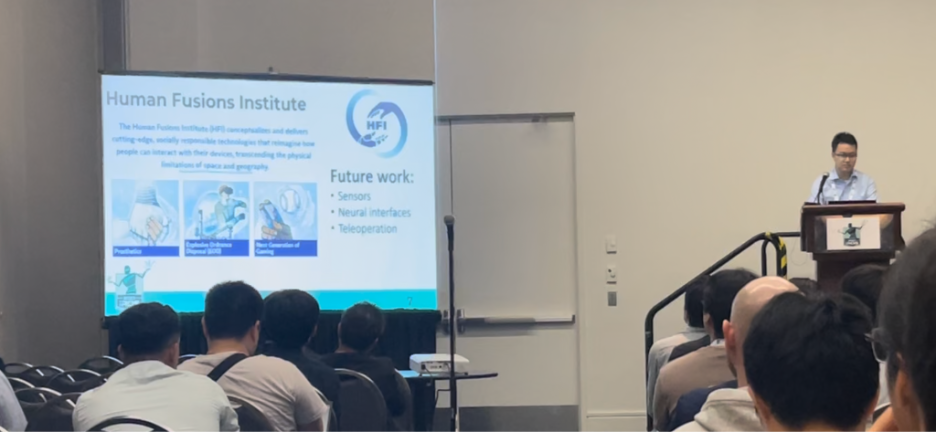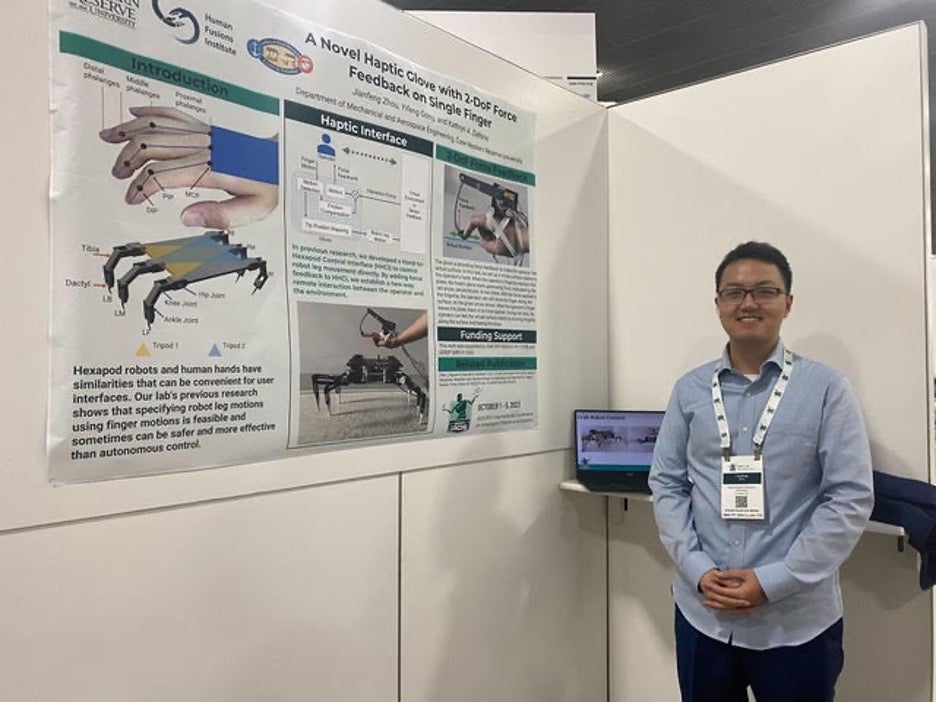A B.S., M.S., and Ph.D. alumna of Case Western Reserve University, Associate Professor Kathryn Daltorio started developing crab robots for Naval applications in 2017. The bio-inspired robotics lab develops engineering solutions inspired by cockroaches, beetles, flies, dogs, slugs, and worms. “I love that animals set a high bar for robot performance,” said Daltorio.
Recently, one of Daltorio’s Ph.D. students, Tom Zhou, had the opportunity to present his research at the International Conference on Intelligent Robots and Systems (IROS) in Detroit. Zhou’s poster presentation, “A Novel Haptic Glove with Two Degrees of Freedom Force Feedback of a Single Finger,” focused on the research he and Daltorio have conducted since they began working together in 2019.
Using funding from one of Daltorio’s ONR young investigator grants, she and Zhou began their studies by researching how to use fingertips to control the crab robot’s motion. Then, they studied how to build the haptic device and seeing how haptic devices can influence the control. Zhou built the device he used for this research and brought videos of the device in action to Detroit.
Daltorio emphasized that Zhou had the opportunity to present his research at “one of the biggest robotics conferences” and how pleased she was that his research was accepted for a poster presentation. During Zhou’s poster session, many haptic researchers in attendance were impressed by the structure of his glove and by the fact that it had two degrees of freedom, whereas many prior gloves had only one.
Since he was young, Zhou was interested in robotics and mechanics. Having enjoyed movies with robots as a kid, he eventually decided that he wanted to build his own robot. After earning his undergraduate degree at Beihang University in his native China, he was drawn to CWRU for his graduate studies after hearing about Daltorio’s research on using human fingers to control robots. He was also drawn to CWRU for the “academic atmosphere.” He praised Daltorio for helping him grow as a researcher, as well as Assistant Professor Zonghe Chua, who taught a haptics course that he particularly enjoyed.
Zhou’s first published paper focused on how finger motions let one choose where the robot steps; he set up a stimulation to prevent robots from stepping on specific lines using his glove finger.
During her studies, Daltorio was initially drawn to robotics when she looked for ways to apply math, science, and art in mechanical engineering “to something with lots of moving parts and no blood.” Now a Human Fusions Institute affiliated faculty member, she is excited to do more research in the human aspects of robotics beyond using human fingers to control her robots.
Also interested in human-robot interaction, Zhou hopes to become a postdoc scholar in a laboratory after he graduates to do haptic research, teleoperations, and robotic research. In the long term, he hopes to eventually create intelligent exoskeletons and artificial limbs.



